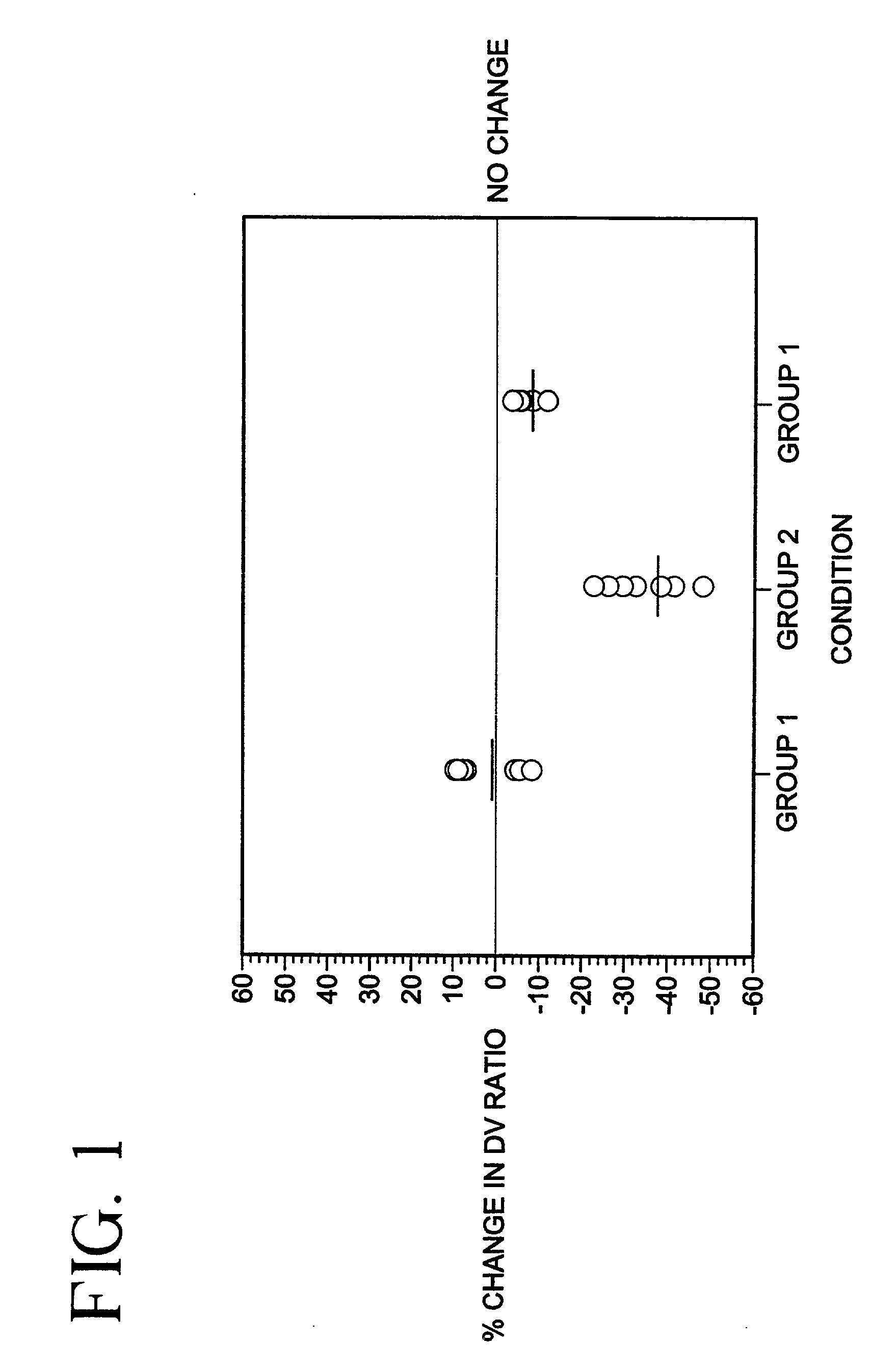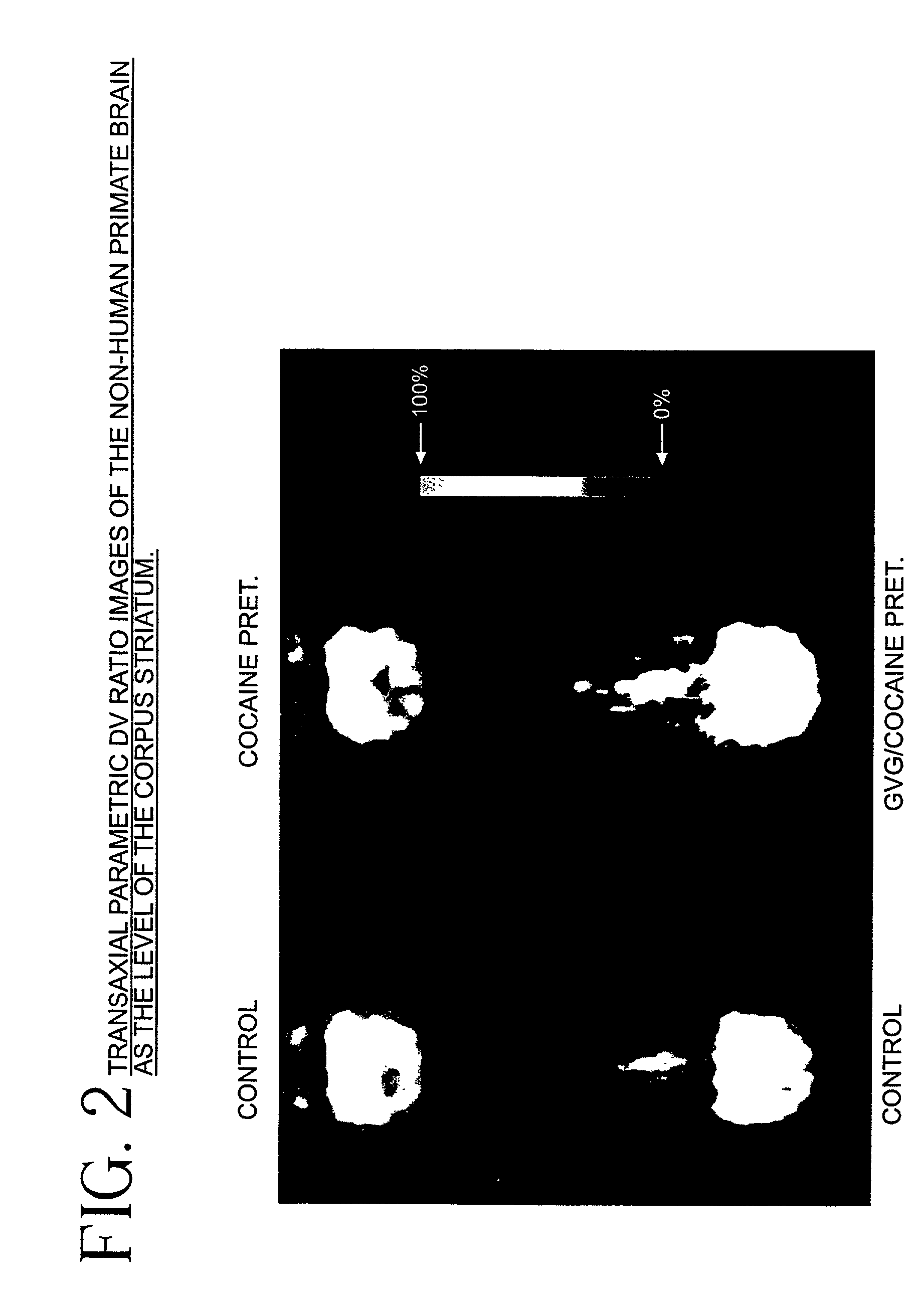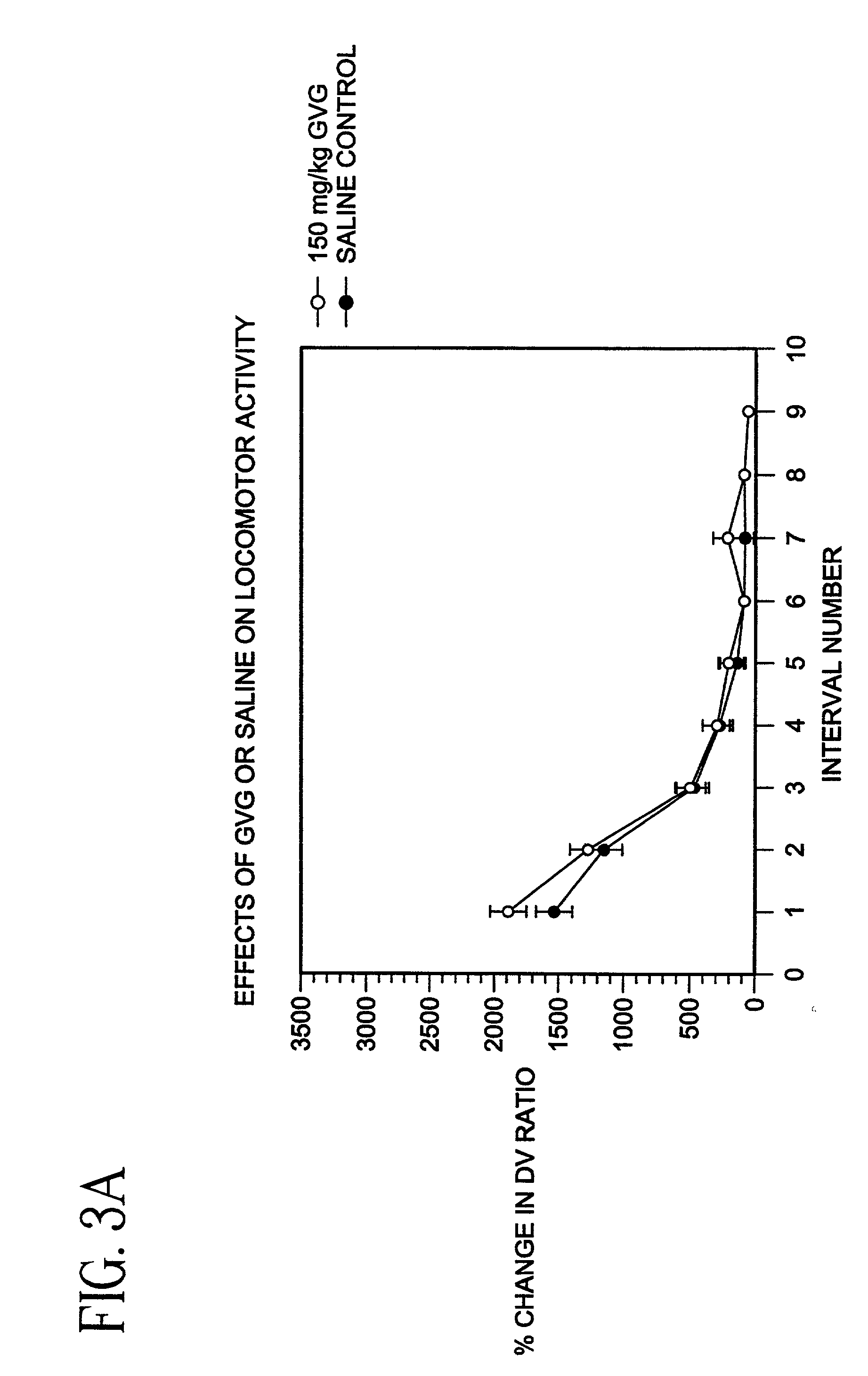Treatment of addiction and addiction-related behavior
a technology for addiction and behavior, applied in the field of addiction and addiction-related behavior treatment, to achieve the effect of reducing differences, reducing or relieving one or more symptoms or conditions
- Summary
- Abstract
- Description
- Claims
- Application Information
AI Technical Summary
Benefits of technology
Problems solved by technology
Method used
Image
Examples
example 1
Non-Human Primate (Baboon) Studies
[0183] In this example twenty non-human primates received two [.sup.11C]-raclopride injections in accordance with the procedure described in Section 1 of Materials and Methods. The first served as a baseline and the second followed cocaine or placebo. Test / retest primates (n=7) shown as Group 1 of Table 1 below received placebo (0.9% saline, 1 mg / kg) prior to the second radio tracer injection in order to determine the test / retest variability of this imaging method.
1TABLE I Groups and experimental conditions Pharmacologic Group condition 1 Control (test / retest) 2 Cocaine treated 3 GVG / Cocaine treated
[0184] All remaining primates (n=13) received a systemic injection of cocaine hydrochloride (0.5, 1.0 or 2.0 mg / kg) either 5 or 30 minutes prior to the second [.sup.11C]-raclopride injection. Of these 13 animals, five received GVG (300 mg / kg, iv) 3 hours prior to cocaine administration.
[0185] Different cocaine doses and cocaine pretreatment time intervals...
example 2
Cocaine-Induced Conditioned Place Preference Studies in Rodents
[0187] In this example the procedure outlined in Section 2 of Materials and Methods was followed. Cocaine produced a dose-dependent CPP response, with the most reliable and robust response occurring at 20 mg / kg as shown in Table 2 below.
2TABLE II Conditioned place preference to cocaine Time spent in chambers (mins) Cocaine (mg / kg) Paired Unpaired 0 7.4 .+-. 0.3 7.6 .+-. 0.3 5.0 8.2 .+-. 0.4 6.8 .+-. 0.5 10.0 9.6 .+-. 0.5.sup.2 5.4 .+-. 0.3 20.0 11.8 .+-. 0.4.sup.3 3.2 .+-. 0.4.sup.4 .sup.1Monitored animals were injected only with saline .sup.2Significantly greater than the 0 and 5 mg / kg doses of cocaine,p < 0.05, analysis of variance (ANOVA) and Student-Newman-Keuls test. .sup.3Significantly greater than the 0.5 and 10 mg / kg doses of cocaine, p < 0.05, ANOVA and Student-Newman-Keuls test. .sup.4Significantly less than 0.5 and 10 mg / kg doses of cocaine, p < 0.01, ANOVA and Student-Newman-Keuls test.
[0188] We therefore cho...
example 3
Food-Induced Conditioned Place Preference Studies in Rodents
[0197] In this example the procedure outlined in Section 3 of Materials and Methods was followed. The results set forth in Table 11 below indicate that food elicited an incentive or rewarding effect. For example, all paired values show that rodents spent more time in the chamber where food was present.
11TABLE XI Effect of GVG (150,300 mg / kg,ip) on conditioned place preference to food Time spent in chambers (min) Treatment pairings Paired Unpaired.sup.2 Saline / Saline 7.3 .+-. 0.6 7.7 .+-. 0.6 GVG / Saline 7.5 .+-. 0.7 7.5 .+-. 0.7 Saline / Food 9.3 .+-. 0.7 5.7 .+-. 0.7 GVG(150 mg / kg) / Food 9.4 .+-. 0.4 5.6 .+-. 0.5 GVG(300 mg / kg) / Food 9.0 .+-. 0.5 6.0 .+-. 0.5 .sup.1Each value represents the mean number of minutes spent in each chamber .+-. S.E.M .sup.2Monitored animals were injected only with saline.
[0198] The administration of 150 or 300 mg / kg of GVG did not alter the CPP response to food as shown in Table 11 despite attenuati...
PUM
| Property | Measurement | Unit |
|---|---|---|
| height | aaaaa | aaaaa |
| diameter | aaaaa | aaaaa |
| flow rate | aaaaa | aaaaa |
Abstract
Description
Claims
Application Information
 Login to View More
Login to View More - Generate Ideas
- Intellectual Property
- Life Sciences
- Materials
- Tech Scout
- Unparalleled Data Quality
- Higher Quality Content
- 60% Fewer Hallucinations
Browse by: Latest US Patents, China's latest patents, Technical Efficacy Thesaurus, Application Domain, Technology Topic, Popular Technical Reports.
© 2025 PatSnap. All rights reserved.Legal|Privacy policy|Modern Slavery Act Transparency Statement|Sitemap|About US| Contact US: help@patsnap.com



